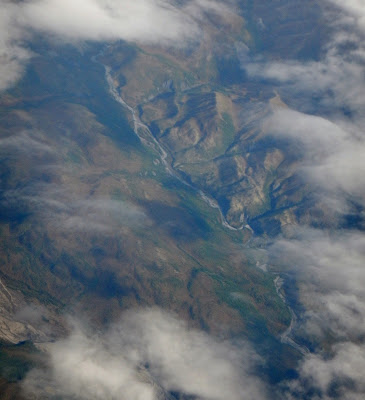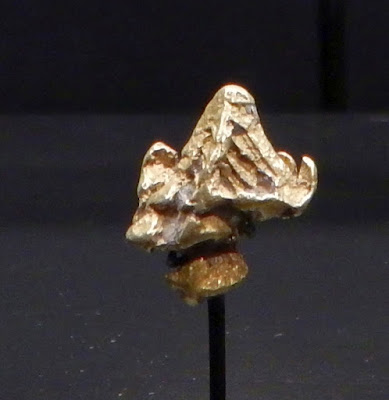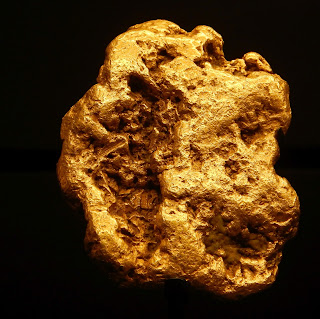More shots from a commercial flight (Toronto-Shanghai), which passed over the western Canadian Arctic, and eastern Siberia.
Melville Island again, but I'm not quite sure what I'm looking at. It looks like some of the folded and faulted rock units of the Melvillian Disturbance.
This is over eastern Siberia. I'm really not sure what this is. My first guess would be a pingo, but given our altitude of 10,000 m and the focal length of this shot, it has to be well over 1 km long, which seems awfully big. Maybe it is an inselberg.
Don't be too quick to go out staking here. I don't see a lot of infrastructure.
Snow-filled drainage pattern on Melville Island, in the western Canadian Arctic.
Well-developed trellis drainage pattern on Melville Island.
The trellis drainage pattern results because the rocks are more easily eroded in some directions than in others. This can be due to bedding in the rock, or faults or other structural weaknesses. The pattern here is quite angular, which suggests faulting to me. Rocks undergoing compression tend to develop two (almost) perpendicular series of faults.
There's also a rather deep-looking canyon in the above two pictures. Normally to get a canyon, you are looking at fluvial erosion over land that is experiencing uplift.Something more has happened here, as it is difficult to follow the canyon through the folded rocks of the Melvillian Disturbance just above the centre of the second photograph above. These rocks were folded and faulted prior to deposition of Late Permian sediments (~250 Ma).
Melville Island again, but I'm not quite sure what I'm looking at. It looks like some of the folded and faulted rock units of the Melvillian Disturbance.
This is over eastern Siberia. I'm really not sure what this is. My first guess would be a pingo, but given our altitude of 10,000 m and the focal length of this shot, it has to be well over 1 km long, which seems awfully big. Maybe it is an inselberg.
Some rugged terrain in eastern Siberia.
Looks like gossan. Who'd have thought there would be minerals in Siberia?
Don't be too quick to go out staking here. I don't see a lot of infrastructure.
Braided rivers in Siberia.









































